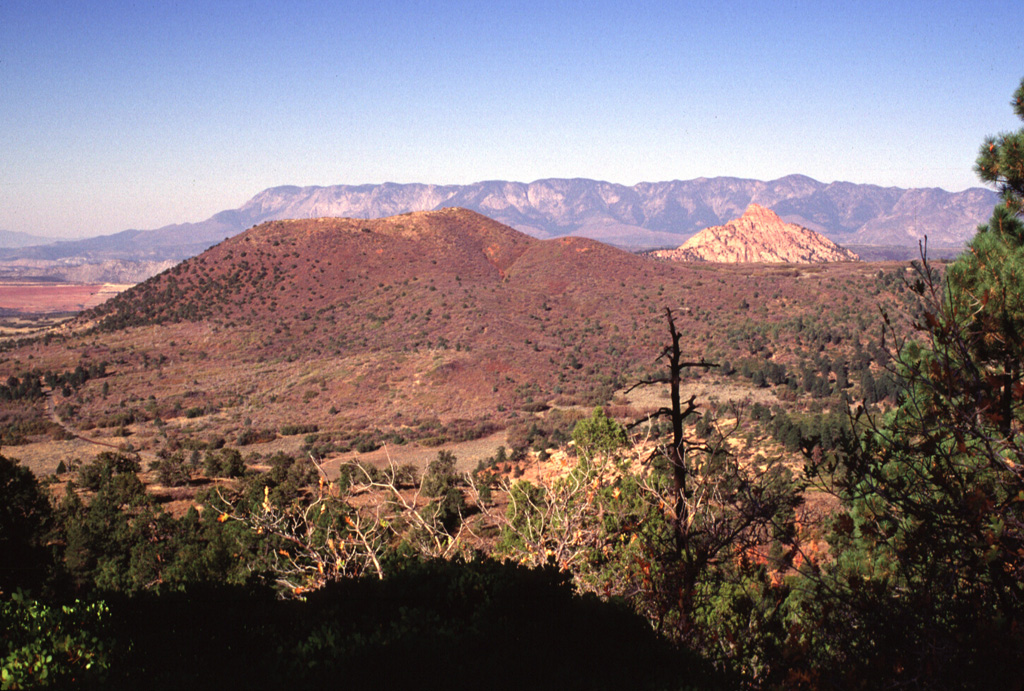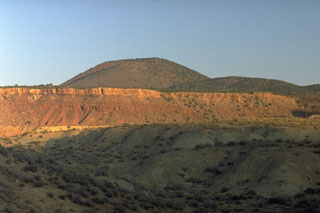Image GVP-04585

Firepit Knoll (left) is the largest and most well-preserved of a cluster of late-Pleistocene cinder cones on the upper Kolob Plateau in SW Zion National Park. These cones were erupted through sedimentary rocks of the Navajo Sandstone, which forms the light-colored peak of Red Butte at the right. The cinder cones erupted basaltic lava flows that traveled down valleys as far as 10-15 km to the south. The flat-topped summits of the Pine Valley Mountains form the skyline.
Photo by Lee Siebert, 1996 (Smithsonian Institution).
![]() This image is made available under the Public Domain Dedication CC0 license, but proper attribution is appreciated.
This image is made available under the Public Domain Dedication CC0 license, but proper attribution is appreciated.

Kolob
